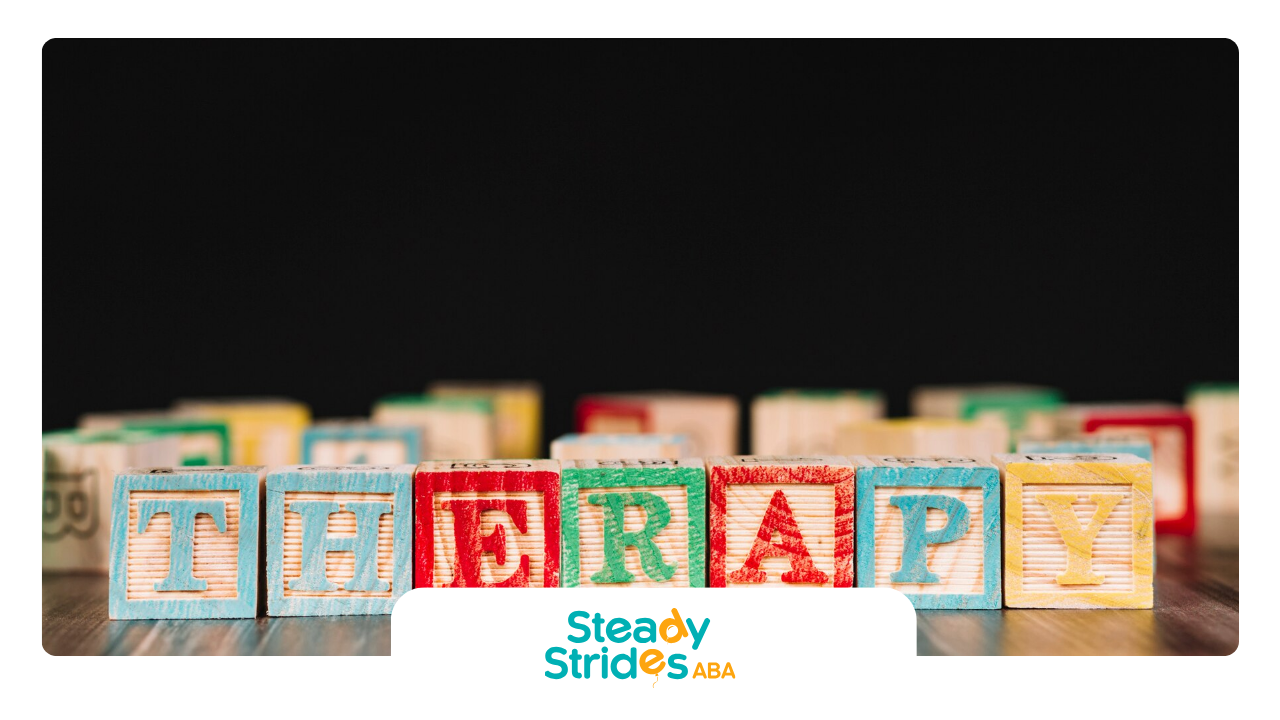Autism spectrum disorder (ASD) is a neurodevelopmental disorder that affects individuals in various ways. One characteristic of ASD is the experience of meltdowns, which are intense responses to overwhelming situations or events. These meltdowns are not tantrums or deliberate attempts to gain attention, but rather a reaction to sensory overload, changes in routine, or other triggers that cause extreme stress. On the other hand, panic attacks are sudden episodes of intense fear or anxiety that are not necessarily tied to specific triggers.
Understanding the differences between autistic meltdowns and panic attacks is crucial for individuals with autism, their caregivers, and professionals working with them. By recognizing the signs and symptoms, appropriate support and interventions can be provided to help individuals navigate these challenging experiences.
In this blog, we will delve into the basics of autism spectrum disorder and its impact, explore the symptoms and triggers of both autistic meltdowns and panic attacks, distinguish between the two experiences, and discuss strategies for managing and preventing meltdowns and panic attacks in individuals with autism. By decoding these experiences, we aim to provide a better understanding of how to support individuals with autism and promote their well-being.
What is Autism Spectrum Disorder (ASD)?
Autism spectrum disorder (ASD) is a developmental disorder that affects communication, social interaction, and behavior. It is characterized by a wide range of symptoms and challenges, and individuals with ASD may experience sensory processing difficulties, which can impact their daily lives. Sensory processing refers to how the brain receives and responds to sensory information from the environment. This can include sensory input such as sounds, sights, smells, tastes, and touch. Young children are often diagnosed with ASD, and early intervention is crucial for their development and well-being.
The Basics of ASD and How It Affects Individuals
Autism spectrum disorder (ASD) encompasses a range of neurodevelopmental conditions that affect individuals in different ways. People on the autism spectrum may have difficulties with communication, social interaction, and behavior. These challenges can impact their daily lives, making it harder for them to navigate social situations, maintain relationships, and engage in everyday activities.
In addition to these core symptoms, individuals with ASD may also exhibit challenging behaviors, such as meltdowns. These behaviors can be a result of sensory overload, changes in routine, or other triggers that cause extreme stress. Understanding the basics of ASD and how it affects individuals is crucial for providing appropriate support and intervention.
Importance of Recognizing Autistic Meltdowns in the Spectrum
Recognizing and understanding autistic meltdowns is essential for individuals on the autism spectrum, their caregivers, and professionals working with them. Autistic meltdowns are intense responses to overwhelming situations or events, and they are not tantrums or deliberate attempts to gain attention. It is important to differentiate between meltdowns and other behaviors in order to provide appropriate support.
By recognizing the signs and symptoms of an autistic meltdown, caregivers and professionals can help create a safe and supportive environment for individuals with autism. This includes understanding the triggers and providing effective support during challenging moments. By offering appropriate support and interventions, individuals with autism can learn important coping skills and navigate the challenges of daily life more effectively.
What is Panic Attacks? Symptoms and Triggers
Panic attacks are sudden episodes of intense fear or anxiety that can be debilitating for individuals who experience them. These attacks are often characterized by physical symptoms such as increased heart rate, chest pain, and shortness of breath. Panic attacks can occur in individuals with anxiety disorders, and they can be triggered by various factors, including phobias, emotional stress, or physical discomfort. Understanding the symptoms and triggers of panic attacks is crucial for identifying and managing these episodes in individuals with autism.
What is Panic Attacks?
Panic attacks are intense episodes of fear or anxiety that can occur suddenly and without warning. They often involve physical symptoms such as a rapid heart rate, chest pain, shortness of breath, and a sense of impending doom. Panic attacks are a defining feature of panic disorder, a type of anxiety disorder. However, they can also occur in individuals without a diagnosed anxiety disorder.
It is important to note that panic attacks are not the same as heart attacks, although the symptoms can be similar. Panic attacks are typically brief and resolve on their own, whereas a heart attack requires immediate medical attention. Understanding the occurrence and characteristics of panic attacks is essential for differentiating them from other forms of anxiety and providing appropriate support for individuals who experience them.
Differences Between Panic Attacks and Other Forms of Anxiety
While panic attacks and other forms of anxiety share similarities, there are key differences that distinguish panic attacks from other anxiety experiences. Panic attacks are characterized by a sudden onset of intense anxiety or fear, often accompanied by physical symptoms such as a racing heart, sweating, trembling, and a sense of impending doom. These symptoms can be overwhelming and debilitating, leading to a loss of control or a feeling of being trapped.
Other forms of anxiety may not have the same intense physical symptoms or sense of imminent danger that panic attacks do. They may involve more persistent worry or fear about specific situations or events. Understanding these differences is important for accurately identifying and managing panic attacks in individuals with autism, as well as providing appropriate support and intervention.
Autistic Meltdowns: Signs and Symptoms
Identifying the signs and symptoms of autistic meltdowns is crucial for understanding and supporting individuals with autism. Autistic meltdowns are intense responses to overwhelming situations or events, and they can be triggered by sensory overload, changes in routine, or other factors.
During a meltdown, individuals with autism may experience a loss of control and exhibit challenging behaviors. It is important for caregivers and professionals to recognize these signs and symptoms in order to provide appropriate support and help prevent escalation.
What does an Autistic Meltdown Feel Like?
Autistic meltdowns have unique characteristics that differentiate them from other behavioral responses. These meltdowns are often triggered by sensory overload. Which means that individuals with autism may become overwhelmed by certain sensory inputs, such as bright lights, loud noises, or crowded spaces. In severe cases, meltdowns can manifest as a complete loss of control and may be difficult to manage.
Understanding the unique characteristics of autistic meltdowns is crucial for identifying and responding to these challenging moments. By recognizing the triggers and providing appropriate support, caregivers and professionals can help individuals with autism navigate these difficult experiences and develop important coping skills.
What are the 6 stages of autism meltdown? It's important to understand that there isn't a universally agreed-upon set of stages for an autistic meltdown. However, a common framework used by some professionals describes six phases in the meltdown cycle: Calm, Triggers, Agitation, Meltdowns, Re-Grouping, and Starting Over.
Sensory Overload and Emotional Dysregulation in ASD
Sensory overload is a common trigger for autistic meltdowns. Individuals with autism may have heightened sensitivity to certain sensory inputs, such as bright lights, loud noises, or strong smells. These sensory stimuli can overwhelm their nervous system, leading to emotional dysregulation and a loss of control.
Emotional stress can also contribute to meltdowns in individuals with autism. Changes in routine, social expectations, or unexpected situations can cause anxiety and distress, which may trigger a meltdown. Understanding the role of sensory overload and emotional dysregulation in meltdowns is essential for providing effective support and intervention.
How Are Panic Attacks and Autism Meltdowns Different?
Distinguishing between autistic meltdowns and panic attacks is important for understanding and responding to the experiences of individuals with autism. Autistic meltdowns are usually caused by sensory processing difficulties or changes in routine, whereas panic attacks are sudden episodes of intense fear or anxiety.
While both experiences can involve increased heart rate and distress, the underlying triggers and characteristics are different. By recognizing these distinctions, caregivers, and professionals can provide appropriate support and help individuals with autism navigate these challenging episodes.
Key Differences in Symptoms and Responses
There are key differences in the symptoms and responses of autistic meltdowns and panic attacks. Autistic meltdowns are often characterized by increased heart rate, as well as physical manifestations such as crying, screaming, or repetitive behaviors. Individuals may exhibit a complete loss of control and have difficulty communicating their needs or feelings effectively.
In contrast, panic attacks are characterized by a sudden onset of intense fear or anxiety, accompanied by physical symptoms such as a racing heart, shortness of breath, and a sense of impending doom. Numbness or tingling sensations may also be experienced during a panic attack. Understanding these differences is important for accurately identifying and responding to the needs of individuals experiencing meltdowns or panic attacks.
Understanding Sensory Processing in ASD vs. Panic Disorder
Sensory processing difficulties play a significant role in both autistic meltdowns and panic attacks. In individuals with autism, sensory overload can trigger meltdowns, as they may become overwhelmed by certain sensory inputs. This can include bright lights, loud noises, or crowded spaces. On the other hand, panic disorder is characterized by sudden, intense anxiety attacks that can be triggered by various factors, including sensory stimuli.
While sensory overload can contribute to both meltdowns and panic attacks, the symptoms and experiences differ. Autistic meltdowns are typically a response to sensory overload, whereas panic attacks involve a sudden onset of intense fear or anxiety. Understanding the role of sensory processing in both conditions is crucial for providing appropriate support and intervention.
Behavioral Responses: Meltdowns vs. Panic Attacks in Autism
Understanding the behavioral responses of individuals with autism during meltdowns and panic attacks is crucial for providing appropriate support. While meltdowns can be triggered by sensory overload or changes in routine, they are distinct from temper tantrums.
Meltdowns often involve a complete loss of control and may include crying, screaming, or engaging in repetitive behaviors. Panic attacks, on the other hand, are characterized by intense fear or anxiety and physical symptoms. By recognizing these behavioral responses, caregivers and professionals can provide effective support and help individuals with autism navigate these challenging experiences.
How Individuals with ASD React During a Meltdown
During a meltdown, individuals with autism may exhibit an intense response to overwhelming situations or events. They may become agitated, anxious, or physically agitated, and they may engage in behaviors such as crying, screaming, or repetitive movements. It is important to provide a safe space for individuals during a meltdown, where they can feel secure and supported.
Alternative communication methods may also be helpful during a meltdown. Some individuals with autism may struggle to communicate their needs or feelings verbally, so providing alternative means of communication, such as visual supports or assistive technology, can help them express themselves and reduce their distress.
By understanding how individuals with autism react during a meltdown, caregivers and professionals can provide appropriate support and help prevent escalation.
Comparing Responses in Panic Attacks to Those in Meltdowns
While panic attacks and meltdowns share some similarities in terms of the physical responses, there are also differences in the way individuals with autism react during these episodes. Both panic attacks and meltdowns can involve increased heart rate, elevated blood pressure, and a heightened level of anxiety. However, panic attacks are typically characterized by a sudden onset of intense fear or anxiety, whereas meltdowns are often triggered by sensory overload or changes in routine.
Understanding the differences in responses between panic attacks and meltdowns is important for providing appropriate support and intervention. By recognizing the unique characteristics of each experience, caregivers and professionals can better assist individuals with autism in managing their symptoms and navigating these challenging episodes.
Strategies for Managing and Preventing Autistic Meltdowns
Managing and preventing autistic meltdowns is essential for promoting the well-being and quality of life for individuals with autism. There are several strategies that can be employed to support individuals during meltdowns. Creating a supportive environment, providing effective support, and using calming tools such as weighted blankets or sensory toys can help individuals regulate their emotions and reduce the likelihood of meltdowns.
By understanding the triggers and implementing appropriate strategies, caregivers and professionals can help individuals with autism navigate challenging moments and develop important coping skills.
Effective Coping Techniques for Individuals with ASD
Effective coping techniques can help individuals with ASD manage meltdowns and develop important self-regulation skills. Providing a quiet space where they can retreat when feeling overwhelmed can be beneficial. Relaxation techniques such as deep breathing exercises or mindfulness can also help individuals calm down during a meltdown. It is important to address and manage challenging behaviors associated with meltdowns in a positive and supportive manner. By teaching individuals with autism effective coping techniques, caregivers and professionals can empower them to better manage their emotions and navigate the challenges of daily life.
Role of Caregivers and Therapists in Managing Meltdowns
Caregivers and therapists play a crucial role in managing meltdowns in individuals with autism. By providing appropriate support and intervention, they can help individuals navigate these challenging experiences and develop important coping skills. Caregivers can create a supportive and understanding environment that promotes emotional regulation and offers a safe space for individuals to express their needs and emotions.
Therapists can provide professional support and guidance, helping individuals and their caregivers develop strategies for managing meltdowns and preventing escalation. By working together, caregivers and therapists can provide the necessary support and intervention to promote the well-being and quality of life for individuals with autism.
How to Handle Panic Attacks in ASD
Handling panic attacks in individuals with ASD requires a multi-faceted approach that incorporates both professional intervention and relaxation techniques. Professional intervention, such as therapy or counseling, can help individuals develop strategies for managing panic attacks and reducing their frequency and intensity.
Relaxation techniques, such as deep breathing exercises or mindfulness, can also be effective in calming the individual during a panic attack. Additionally, addressing any phobias or triggers that may be contributing to the panic attacks can help individuals better manage their symptoms and prevent future episodes.
How to Manage Panic Attack Symptoms in Autistic Individuals
There are various techniques that can be used to alleviate panic attack symptoms in autistic individuals. The best way to manage panic attacks may vary depending on the individual's specific needs and preferences. However, relaxation techniques such as deep breathing exercises, progressive muscle relaxation, or guided imagery can be effective in reducing the severity and duration of panic attacks.
It is important to work with professionals to develop a personalized plan that addresses the unique needs and challenges of the individual. By implementing techniques to alleviate panic attack symptoms, individuals with autism can better manage their anxiety and improve their overall well-being.
Importance of Professional Intervention in Severe Cases
In severe cases of panic attacks or meltdowns, professional intervention is crucial for providing effective support and intervention. Professionals, such as therapists or counselors, can provide specialized strategies and techniques to help individuals manage their symptoms and develop important coping skills.
They can also offer guidance and support to caregivers, helping them understand and respond to the needs of the individual during these challenging episodes. By seeking professional intervention, individuals with autism and their caregivers can receive the necessary support to navigate severe cases of panic attacks or meltdowns and improve their overall well-being.
Environmental Stimuli in Triggering Meltdowns and Panic Attacks
Environmental stimuli play a significant role in triggering both meltdowns and panic attacks in individuals with autism. For meltdowns, sensory overload from bright lights, loud noises, or crowded spaces can overwhelm the individual's nervous system and lead to a meltdown.
Panic attacks can be triggered by various environmental factors, such as unexpected changes in routine or stressful situations. Providing a safe and supportive environment that minimizes triggering stimuli is important for preventing meltdowns and panic attacks and promoting the well-being of individuals with autism.
Identifying and Modifying Triggering Factors in the Environment
Identifying and modifying triggering factors in the environment is essential for preventing meltdowns and panic attacks in individuals with autism. Some common triggering factors include bright lights, loud noises, or other sensory inputs that can overwhelm the individual's nervous system. By recognizing these triggers, caregivers and professionals can make adjustments to the environment to minimize their impact.
This can include dimming lights, reducing noise levels, or providing a quiet space for the individual to retreat to when feeling overwhelmed. By creating a supportive and sensory-friendly environment, triggering factors can be minimized, reducing the likelihood of meltdowns and panic attacks.
Creating a Supportive and Understanding Surrounding for ASD Individuals
Creating a supportive and understanding environment is crucial for individuals with autism. This includes providing appropriate sensory input, such as weighted blankets or fidget toys, to help regulate their sensory experiences. It also involves recognizing and responding to challenging moments, such as meltdowns or panic attacks, with empathy and support.
By creating a supportive environment, individuals with autism can feel safe, valued, and understood. The table below provides a summary of strategies for creating a supportive and understanding surrounding for individuals with autism:
| Strategies for Creating a Supportive and Understanding Surrounding |
|---|
| Provide appropriate sensory input, such as weighted blankets or fidget toys |
| Recognize and respond to challenging moments with empathy and support |
| Create a safe and calm environment |
| Establish clear routines and expectations |
| Encourage open communication and provide alternative means of expression |
| Foster a positive and inclusive social environment |
| Collaborate with professionals and other caregivers for guidance and support |
Conclusion
In essence, understanding the nuances between autistic meltdowns and panic attacks is crucial for effective support and intervention. Recognizing the unique signs and triggers of each condition empowers caregivers and individuals to respond appropriately and compassionately. By implementing tailored strategies for managing meltdowns and panic attacks, both those with Autism Spectrum Disorder (ASD) and individuals experiencing anxiety can navigate these challenging moments with greater ease.
Creating a supportive environment that acknowledges and accommodates individual needs is paramount in fostering emotional well-being and resilience. Ultimately, by increasing awareness and promoting understanding, we can enhance the quality of life for those affected by ASD and anxiety disorders.
Understanding the distinction between meltdowns and panic attacks in autism is crucial. If your child experiences meltdowns, you're not alone. Steady Strides ABA, a trusted provider of ABA therapy in Texas, can help.
Our compassionate therapists utilize evidence-based techniques to develop individualized plans that address the root causes of meltdowns and promote emotional regulation skills. We create a safe and supportive environment where children with autism can thrive.
Visit our website to learn more about how we can empower your child's journey.












